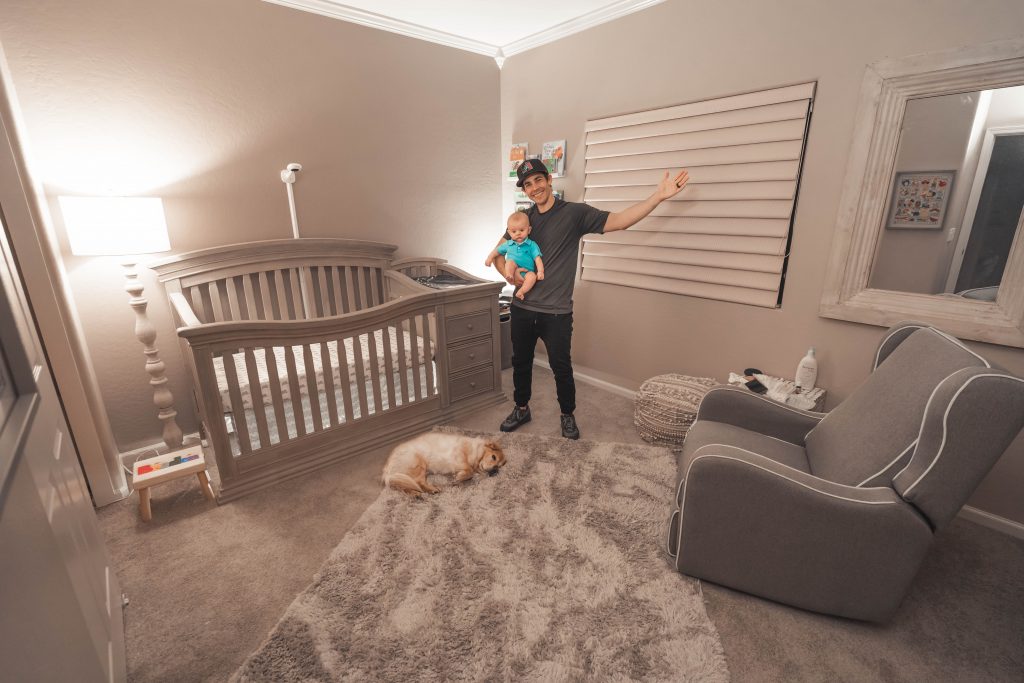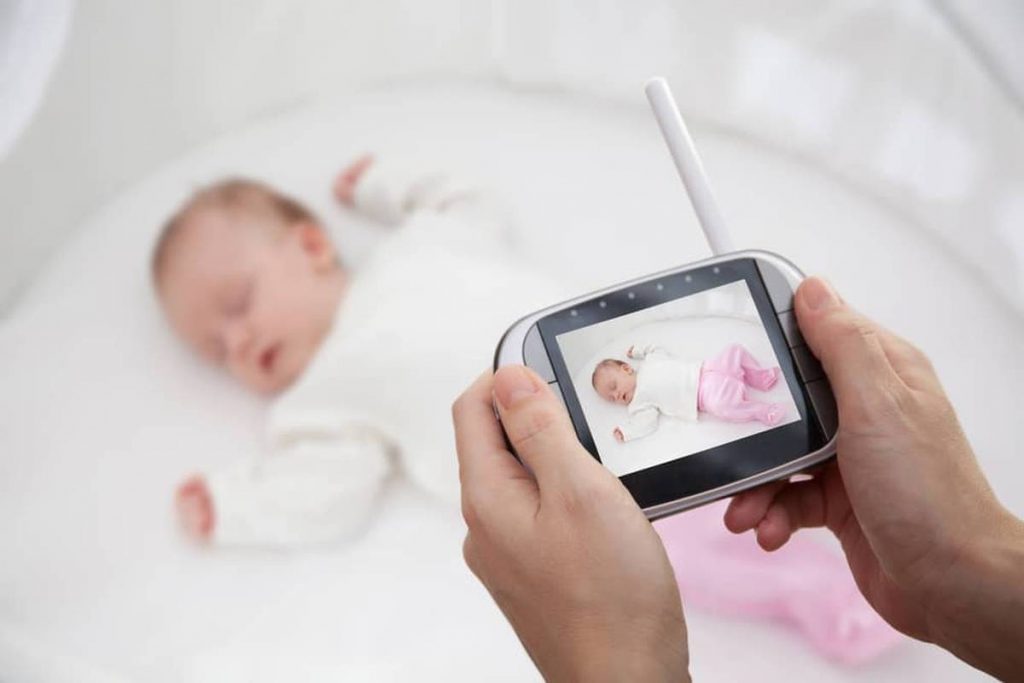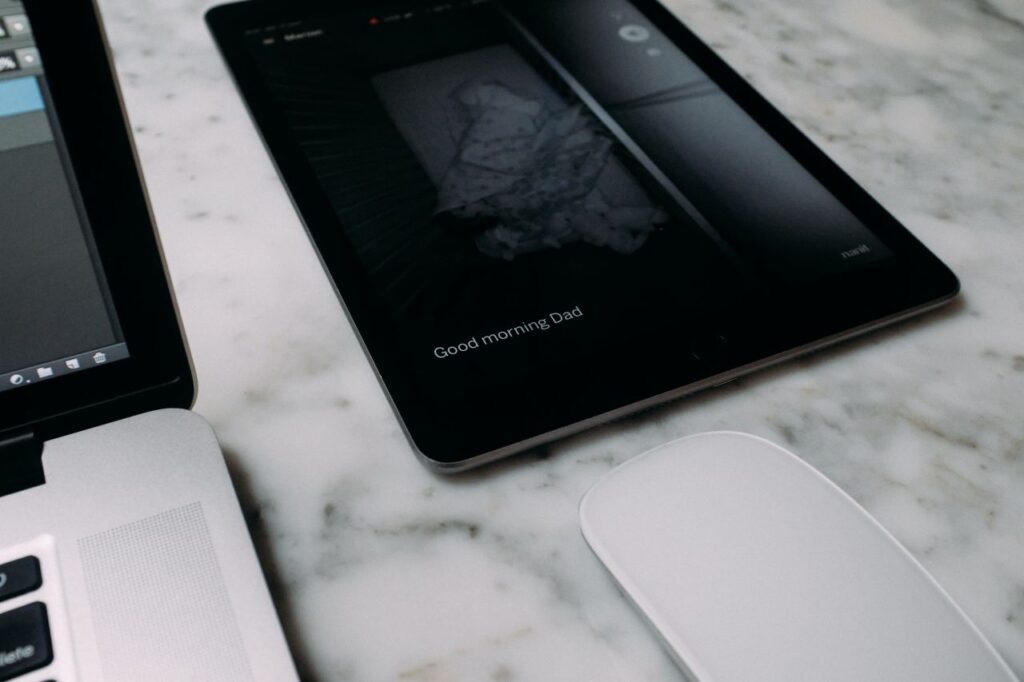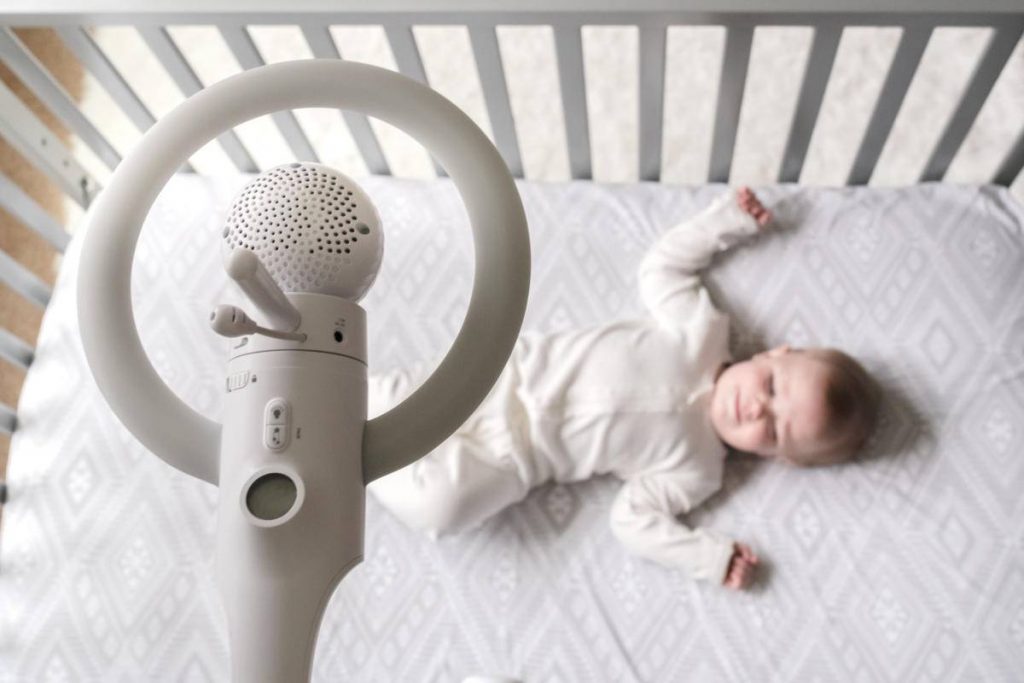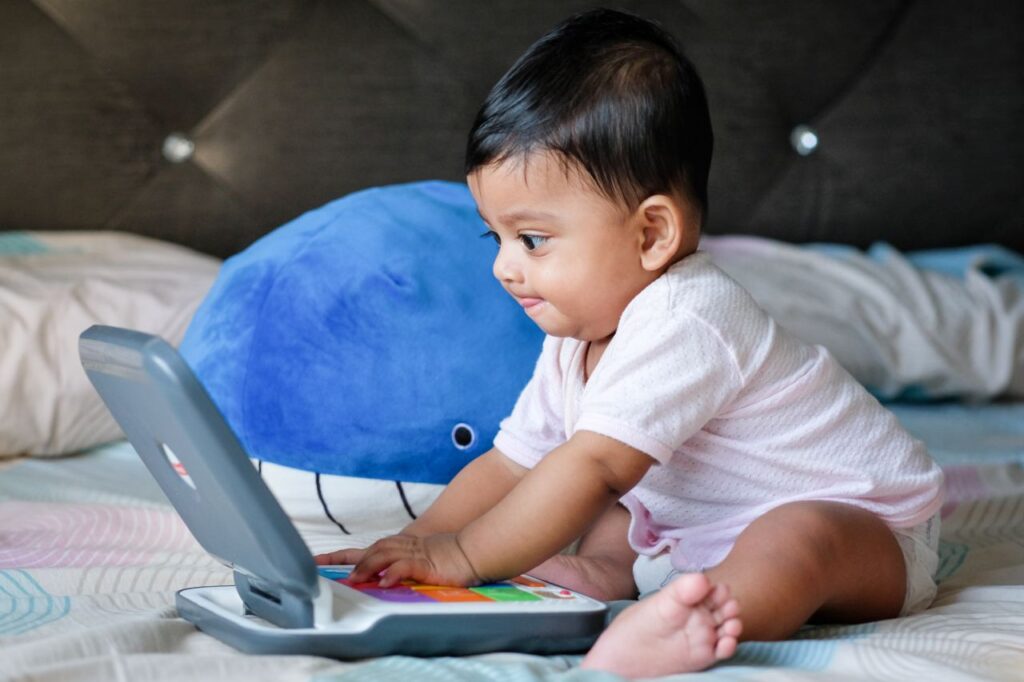It's not hard to discover articles online warning that the radio waves and other electromagnetic radiation released by baby monitors are dangerous for your child's health. There is currently no conclusive evidence between exposure to baby monitor frequencies with adverse health impacts, while each parent is free to conduct their own research and make decisions about the safety of their child.
One of the first things that parents buy for a nursery is a baby monitor. When a baby is napping, a parent or nanny may feel more at ease knowing that they will be notified immediately if there is any cause for concern, thanks to the presence of a nursery monitor.
Some parents feel more at ease knowing their infant is safe and sound throughout the night thanks to the use of a monitor. As parents of premature infants are urged to be more watchful for signs of SIDS because their baby may be at a higher risk, a monitor may seem like a must-have item.
Countless models of baby monitors are available to parents. In addition to the traditional audio monitor, there are also video monitors, motion monitors, and portable baby monitors that can detect things like heart rate, respiration, and even skin temperature while the baby is sleeping. Easy monitoring of your sleeping kid means more time for you to get things done around the house or at the office. A baby monitor seems like the most obvious way to avoid SIDS, every parent's worst fear.
Online baby product directory at My Baby Nursery.
Are Baby Monitors Possible To Affect A Baby's Health?
All baby monitors broadcast audio and video information to a receiver using a different spectrum of radio frequencies. Some baby monitor devices may pose a risk to your child's health since they produce radio frequencies in a range that is potentially harmful to babies.
In 2011, the WHO's International Agency for Research on Cancer (IARC) concluded that exposure to any radio frequency could increase the risk of developing cancer.
Frequencies between 1.89 and 2.4 GHz are used by the vast majority of current baby monitors, which utilise DECT or FHSS technologies. There are worries about the high levels of radiation emitted by gadgets that use the same electromagnetic frequencies (EMF) as microwaves and WiFi routers.
In particular, video baby monitors constantly radiate microwave energy in the form of powerful bursts in order to function. Even in standby mode, these bursts can occur as frequently as once every hundred milliseconds.
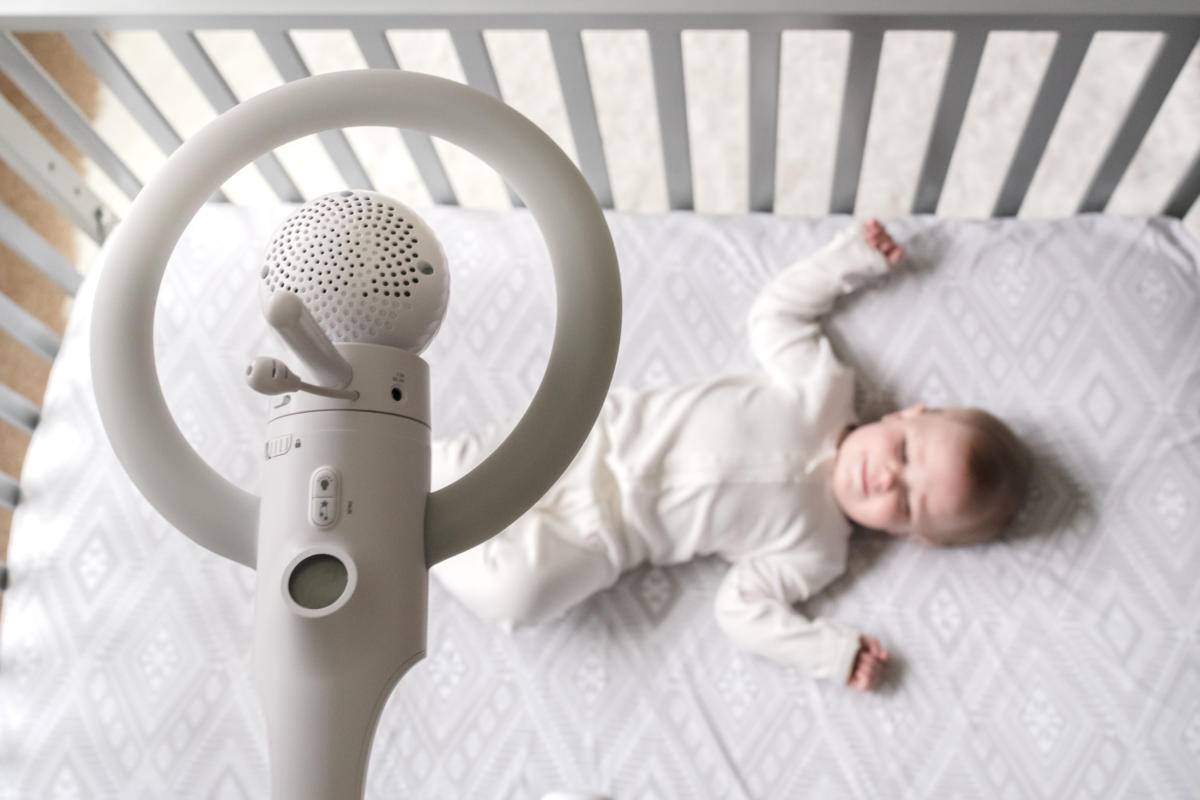
Radiation And The Health Of Your Baby
Exposure to radiation from devices like cell phones has been the subject of a number of research over the years, some of which have produced contradictory results. To determine where worries should be focused, the World Health Organization (WHO) is conducting a comprehensive investigation of radiation impacts. However, at this time there is a lack of solid data on infant monitors, and the benefits of these devices often exceed the dangers.
With regards to radiation, several monitors employ identical technologies to those found in hospitals and NICUs, and others go to great lengths to address these concerns in their Frequently Asked Questions. Look for radiation monitors that address your unique worries if you're still worried about exposure.
If parents are concerned about their child's exposure to the monitor's signal, they can reduce the amount of time their child is in contact with it by using it only when necessary (such as only at night or during naps) or by turning it off (in the case of a sound monitor) whenever another adult is present to provide supervision.
Security For Your Child
Many parents find that having a baby monitor to keep track of their child's vitals is a huge relief. There should be no hesitation in spending the money to determine if a youngster has stopped breathing. Fortunately, parents may lessen the risks associated with the monitors and wearables by employing prudent use of the technology.
According to the Juvenile Products Manufacturers Association's (JPMA) Baby Safety Zone, dangling cables from baby monitors are a major cause of injury to children in their bedrooms. 2 The Joint Commission on the Safety of Infants and Young Children recommends keeping monitors out of baby's reach, paying attention to how a baby's reach shifts over time to adjust a certain distance as required, and just never putting a monitor inside or on the edge of a crib to minimise the possibility of injury.
Choosing The Best Baby Monitor To Ensure Safety
At SafeWise, our top priority is ensuring that you and your loved ones are safe in every way possible. You may rest easier knowing that your kid is safe and sound while they sleep thanks to the numerous excellent baby monitoring solutions now available on the market.
Looking for baby monitors for baby nursery? Look no further. Check out our range here.
Some Families May Require Monitors, While Others May Not.
Let us begin by emphasising that there is no one right way to raise children and that every home is unique in its size and layout.
There is no need for a baby monitor if your apartment is less than 500 square feet because you will be able to hear your child from any room. However, a family with a 3,000-square-foot, three-story home may need strategically positioned monitors to ensure everyone's safety.
What About Movement Monitors?
Of course, some households get a baby monitor for reasons other than to respond to the infant's cries. There are now monitors available that use motion detection to assist prevent sudden infant death syndrome. Parents can be notified when their baby hasn't moved for a predetermined amount of time by using a movement monitor. If the infant remains still for too long, an alarm will go off to alert the parents.
In addition, there are now devices that can measure blood oxygen and heart rate.
Most people seem to like these displays, according to reviews. There are also miraculous accounts of parents who discovered their child was not breathing just in time to save him or her from certain death. However, other parents have complained of many false alerts that keep them up at night worrying about their children's safety when there is no reason to worry.
For the sake of this piece, however, we will restrict our attention to the effects of audio and visual monitoring on rest.
The Good And The Bad Of Baby Monitors And Baby Sleep
Both the video and non-visual versions of sound monitors have significant benefits. A screen is a fantastic aid that will... well… Listen for your baby's cries.
Is that a sign of hunger? Does he appear to be in pain? Do You hear a sigh of sleepiness from him? Is he unable to move because one of his legs is caught in the crib's bars? (Of course, a video monitor is required for that one.)
Rather than having to sneakily peek in on your baby by placing your ear to the door or sticking your head in the room (or perhaps even army crawling across the nursery floor), all you have to do is use the monitor.
Having a baby monitor is also a terrific idea if your home is huge. A baby monitor can provide you with peace of mind if your child naps on the second level while you and your partner watch a movie in the basement. When the older kids are napping, you can take them outside to play in the yard.
You can accomplish these things without worrying about abandoning your baby thanks to a baby monitor.
Indeed, baby monitors can be extremely useful throughout sleep training for the same reasons. There may be no need for a monitor if parents practise no-cry sleep coaching and stay in the room with their child. However, if you plan on using the cry technique of sleep training and leaving the room, you should pay attention to your baby's cries. A screen makes it simple to do so.
Baby monitors have their uses, but they also have the potential to become a distraction.
Check out our post on What to consider when buying a baby monitor?
Both The Bad And The Ugly Of Baby Monitors And Baby Sleep
Baby monitors are convenient since they allow you to hear your child whenever they cry. One drawback of baby monitors is that they allow you to hear your child with every cough, sneeze, sigh, hiccup, etc.
During the newborn stage, you will almost certainly notice that your baby makes a variety of cooing and gurgling noises at all hours of the night. Because all of these sounds are amplified by a baby monitor, any sound that your baby makes is likely to rouse you from the restorative slumber that you so desperately require.
And, if it causes you to rush over to check on your child, which is a totally natural instinct for new parents to have, by the way! you face the risk of accidentally waking your child up, which is something that no parent ever wants to have to do.
What Are The Risks And Side Effects On Health Of Baby Monitors?
The skull of a newborn is thinner than that of an adult, so that the brain can continue to expand and develop until roughly age 20. Therefore, during these formative years, a child's brain is particularly vulnerable to the impacts of electromagnetic radiation.
Compared to a ten-year-old and an adult, a child's head absorbs less electromagnetic radiation from a nearby mobile phone, as shown in the image below.
Rapid brain development makes infants more vulnerable to the long-term effects of electromagnetic fields. Exposure to high amounts of electromagnetic radiation has been linked to a variety of health risks and complications.
- Problematic or insufficient brain growth.
- Interrupting a baby's sleep routine.
- Detrimental effects on the immune system.
- Affects the reproductive system negatively.
Babies, whose brains and bodies are still maturing, are especially vulnerable to these negative impacts.
There has been a 60-fold increase in autism spectrum disorders (ASD) in recent years, according to research published in 201 a former lecturer at Imperial College London. According to the research, environmental shifts are the only plausible explanation for this rise.
These days, we're subjected to higher levels of electromagnetic radiation than ever before due to the prevalence of mobile phones, WiFi routers, and low-frequency fields from household gadgets.
Because of this, you should give careful thought to the entire setting before settling on a location for the baby monitor.
The Truth About Baby Monitors
Today, most parents choose for a wireless baby monitor that communicates via an analogue or digital signal. Digital uses technologies like WiFi, Bluetooth, and Digital Enhanced Cordless Communication (DECT), while analogue uses the 40 MHz FM radio frequency. While analogue is generally trusted more than digital, wireless security is always a problem.
Thermal Effect
The term "thermal effect" is used to describe NIR's warming properties. The microwave oven uses NIR to cook food. When we use a cell phone, cordless phone, or baby monitor in close proximity to our bodies, the same thing happens; the non-ionizing radiation it generates causes the tissues to heat up (e.g., brain tissue).
The danger zone for the thermal effect is explored. This figure is a measure of the quantity of radiation absorbed by the body at full power and is known as the Specific Absorption Rate (SAR). Over a single gramme of tissue, the FCC considers a device to be within safety limits if it generates less than 1.6 watts per kilogramme (W/kg). A false sense of safety is provided by this restriction, though.
First, it should be noted that the 1993 determination of the level was made during a time of significantly lower NIR exposure. In addition, it does not take into account the current reality of simultaneous exposure to many gadgets. Second, liquid-filled, a plastic, computer model based on a 220-pound mannequin was used to determine the level, and not a toddler, infant, or pregnant.
These are just two examples of the many problems that make the SAR value a poor indicator of the risk that a gadget poses to children and infants.
Children are more vulnerable to radiation exposure from electronic gadgets than adults, according to a landmark study conducted in 1996. Radiation has a shorter distance to travel before reaching children's brains due to their thinner skulls and smaller ears.
Non-Thermal Effect
The second consequence of NIR that is seldom, if ever, included in assessments of baby monitors (or any other device that emits NIR) is the non-thermal effect. This effect has been linked to things like "genetic damage, reproductive defects, immune system dysfunction, neurological degeneration and cognitive effects, nervous system dysfunction, cancer, protein and kidney damage, peptide damage,and developmental effects," as noted by the American Academy of Environmental Medicine.
The effects of non-ionizing radiation on the development of pregnant mice were examined, for instance, by Dr. Hugh S. Taylor, professor and chief of the Division of Reproductive Endocrinology and Infertility in the Department of Obstetrics, Gynecology, and Reproductive Sciences at Yale University. When he and his team tested the effects of cell phone radiation on adult mice, they discovered that the rodents exhibited abnormal behaviours like hyperactivity and memory loss. According to Dr. Taylor's research, this is the "first experimental evidence that foetal exposure to radiofrequency radiation from cellular devices does alter adult behaviour."
Use Of A Baby Monitor Rightway
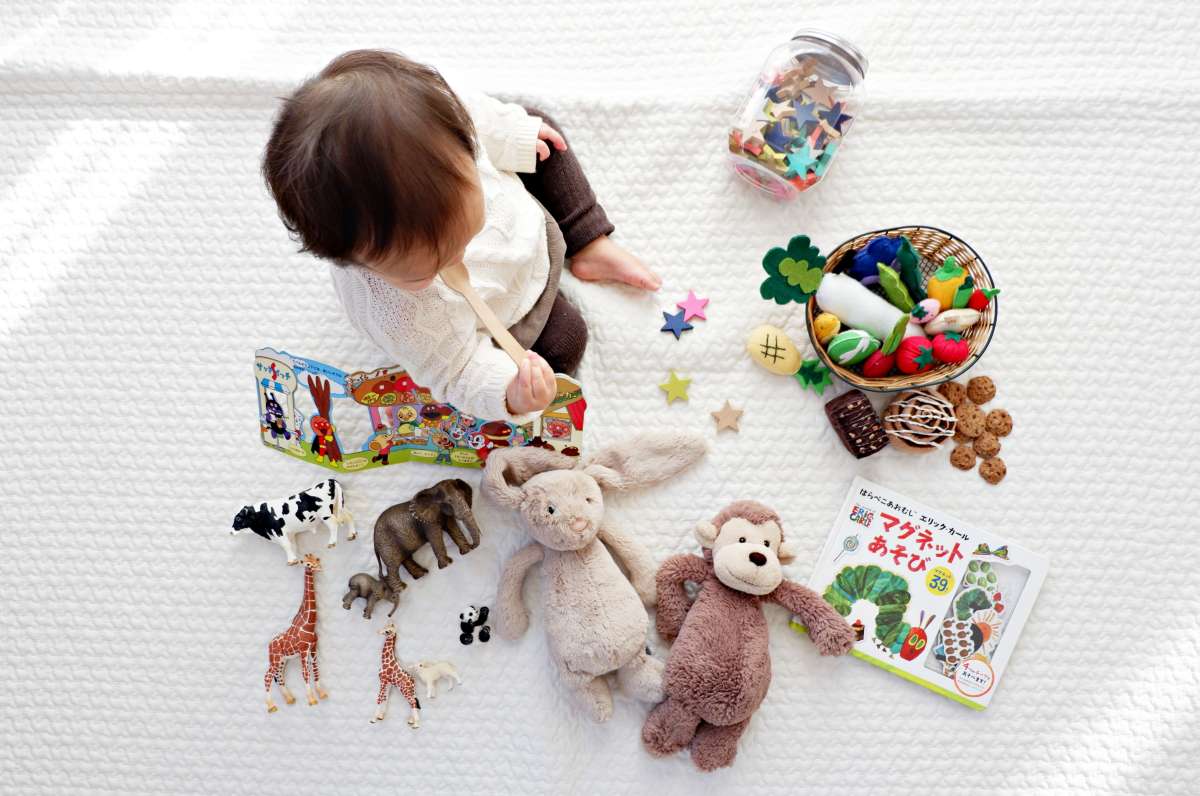
The baby monitor must be kept at least three feet away from the infant's crib, play yard, bassinet, or other secure sleeping area. Approximately, that's the width of the crib plus five to six inches. If you have young children in the house, make sure they don't get into anything dangerous by placing the monitor in a secure location and hiding the wires. You should never put a baby monitor inside a crib or on its side.
At the same time, you should check the eating, playing, and sleeping regions of your child whenever they reach a new physical milestone. Now is an ideal time to perform a routine safety inspection.
- If your kid is old enough, has he or she rolled over? Great! To truly understand how they feel, you should get down on the floor and assume their position. That's a great approach to notice details you might have missed otherwise.
- Is your little one capable of sitting up? Awesome! Simply restate the preceding (and lower the crib mattress).
- To what extent has your infant already demonstrated mobility? Wonderful! Try to see things from their point of view, like the ones mentioned in the first item. Maintain a risk-free setting for them. All too often, adults underestimate how tall their children actually are.
Other Safety Tips
Don't let little fingers play with the blinds' strings; instead, tuck them up high. Put covers on the outlets. You should put coverings on the doorknobs. Keep all medications and cleaning supplies in a secure location. Prioritize these safety measures as soon as possible, if not before, your kid reaches a developmental milestone. For optimal safety, you should aim to be six months ahead of your kid.
If you have a young child, you should immediately examine the placement of all electric cables, including those attached to the wall, to ensure they are out of reach.
Monitors For Babies During Sleep Training
Sleep training is a technique that can be used to assist your infant learn to sleep through the night as he or she gets older. A baby monitor can be helpful for sleep training, but it can also be disruptive. Hearing your child's cries amplified on a monitor could cause your heart rate to skyrocket and cause you to worry that your child is in grave danger.
However, some infants may have medical needs that necessitate frequent parent checks, and in such circumstances, parents will likely be extra vigilant about monitoring their child's every squeak and cry. But for the typical healthy infant, it's not necessary to listen to every sound the baby makes. It's important to keep in mind that minor crying and fussing in the intervals between sleep cycles is quite normal and to be expected. There's a chance you'll get in the way if you jump at every sound or whimper. If you do this, your kid will never get the chance to learn to go to sleep without your help.
Keep in mind that the baby monitor is a device. It's not the tools you use as a parent so much as how you use them that makes a difference, and that's true for a lot of different technologies. Certainly put the baby monitor to good use if it's proving to be a useful aid. If, however, the baby monitor is causing you to be roused from sleep unnecessarily or is causing you frustration during sleep training, it may be best to put it away (at least temporarily)
Conclusion
Some baby monitors may damage infants using radio frequencies. Parental discretion determines kid safety. According to the WHO's International Agency for Research on Cancer, any radio frequency may increase cancer risk. The WHO is studying infant radiation effects. Despite their benefits outweighing their hazards, neonatal monitor research is scarce.
Monitors can be used safely by parents. Baby monitors are great. Listen to your baby's screams. A monitor can reassure you if your youngster naps on the second level while you and your partner watch a movie in the basement. Motion-detecting devices can prevent SIDS in newborns.
Baby monitors let you hear your baby from anywhere in the house. No-cry sleep coaching and parental presence may eliminate the need for a monitor. Electromagnetic radiation causes many health issues. A 1996 study found that children are more sensitive to radiation from electronic devices than adults. Most families use digital or analogue wireless baby monitors.
Digital technology includes Wi-Fi, Bluetooth, and DECT (DECT). At least three feet should separate the baby monitor from the crib, play yard, bassinet, or other safe sleeping environments. Always safeguard them. Sleep training with a baby monitor may annoy parents.
Content Summary
- It's not hard to discover articles online warning that the radio waves and other electromagnetic radiation released by baby monitors are dangerous for your child's health.
- There is no conclusive evidence between exposure to baby monitor frequencies and adverse health impacts. At the same time, each parent is free to conduct their research and make decisions about their child's safety.
- One of the first things parents buy for a nursery is a baby monitor.
- All baby monitors broadcast audio and video information to a receiver using different radio frequencies.
- Some baby monitor devices may risk your child's health since they produce radio frequencies that are potentially harmful to babies.
- However, at this time, there is a lack of reliable data on infant monitors, and the benefits of these devices often exceed the dangers.
- Look for radiation monitors that address your unique worries if you're still worried about exposure.
- Many parents find that having a baby monitor to keep track of their child's vitals is a huge relief.
- Parents may lessen the risks associated with the monitors and wearables by employing prudent use of the technology.
- There is no need for a baby monitor if your apartment is less than 500 square feet because you can hear your child from any room.
- Of course, some households get a baby monitor for reasons other than to respond to the infant's cries.
- Now, monitors that use motion detection to prevent sudden infant death syndrome are available.
- Using a movement monitor, parents can be notified when their baby hasn't moved for a predetermined amount of time.
- For the sake of this piece, however, we will restrict our attention to the effects of audio and visual monitoring on rest.
- Both the video and non-visual versions of sound monitors have significant benefits.
- A baby monitor is also a terrific idea if your home is huge.
- Thanks to a baby monitor, you can accomplish these things without worrying about abandoning your baby.
- Indeed, baby monitors can be extremely useful throughout sleep training for the same reasons.
- However, if you plan on using the crying technique of sleep training and leaving the room, you should pay attention to your baby's cries.
- Baby monitors are convenient since they allow you to hear your child whenever they cry.
- One drawback of baby monitors is that they allow you to hear your child with every cough, sneeze, sigh, hiccup, etc.
- Therefore, during these formative years, a child's brain is particularly vulnerable to the impacts of electromagnetic radiation.
- Rapid brain development makes infants more vulnerable to the long-term effects of electromagnetic fields.
- Exposure to high amounts of electromagnetic radiation has been linked to various health risks and complications.
- There has been a 60-fold increase in autism spectrum disorders (ASD) in recent years, according to research published in 201 by a former lecturer at Imperial College London.
- These days, we're subjected to higher levels of electromagnetic radiation due to the prevalence of mobile phones, WiFi routers, and low-frequency fields from household gadgets.
- Today, most parents choose a wireless baby monitor that communicates via an analogue or digital signal.
- When we use a cell phone, cordless phone, or baby monitor in close proximity to our bodies, the same thing happens; the non-ionizing radiation it generates causes the tissues to heat (e.g. brain tissue).
- The danger zone for the thermal effect is explored.
- This figure measures the quantity of radiation absorbed by the body at full power and is known as the Specific Absorption Rate (SAR).
- When he and his team tested the effects of cell phone radiation on adult mice, they discovered that the rodents exhibited abnormal behaviours like hyperactivity and memory loss.
- The baby monitor must be kept at least three feet away from the infant's crib, play yard, bassinet, or other secure sleeping areas.
- If you have young children in the house, ensure they don't get into anything dangerous by placing the monitor securely and hiding the wires.
- You should never put a baby monitor inside a crib or on its side.
- At the same time, you should check your child's eating, playing, and sleeping regions whenever they reach a new physical milestone.
- Now is an ideal time to perform a routine safety inspection.
- A baby monitor can be helpful for sleep training but can also be disruptive.
- Certainly, put the baby monitor to good use if it's proving to be a useful aid.
- If, however, the baby monitor is causing you to be roused from sleep unnecessarily or is causing you frustration during sleep training, it may be best to put it away (at least temporarily)
FAQs About Baby Monitor
They can potentially cause false alarms, resulting in infants being subjected to unnecessary testing and money expenditures.
Approximately four years old
It is recommended by the vast majority of professionals that you discontinue using a baby monitor when your child is approximately four years old. The explanations could be divided into two categories: At that time, they are aware that they are being watched. In addition, they are completely used to sleeping in their bed now and have no trouble doing so.
If you want to reduce your exposure to electromagnetic fields, keep at least this distance away from the source. For example, digital cordless baby monitors have been studied and shown to generate nearly the same amount of radiation as a mobile phone tower 500 feet (150 m) distant when putting less than 3.2 feet (1 m) from a baby's crib.
To put it bluntly, you wouldn't want to invite hackers from across the globe into your child's bedroom using an Internet-connected baby monitor. WiFi baby monitors can be used either locally, over your home network, or remotely, over the Internet.
Even though there is no one set guideline, most experts recommend keeping a baby monitor on your child for at least the first year of their life. On the other hand, some evidence suggests that earlier disabling of the monitor assists both the parent and the child in developing healthier sleep habits.
